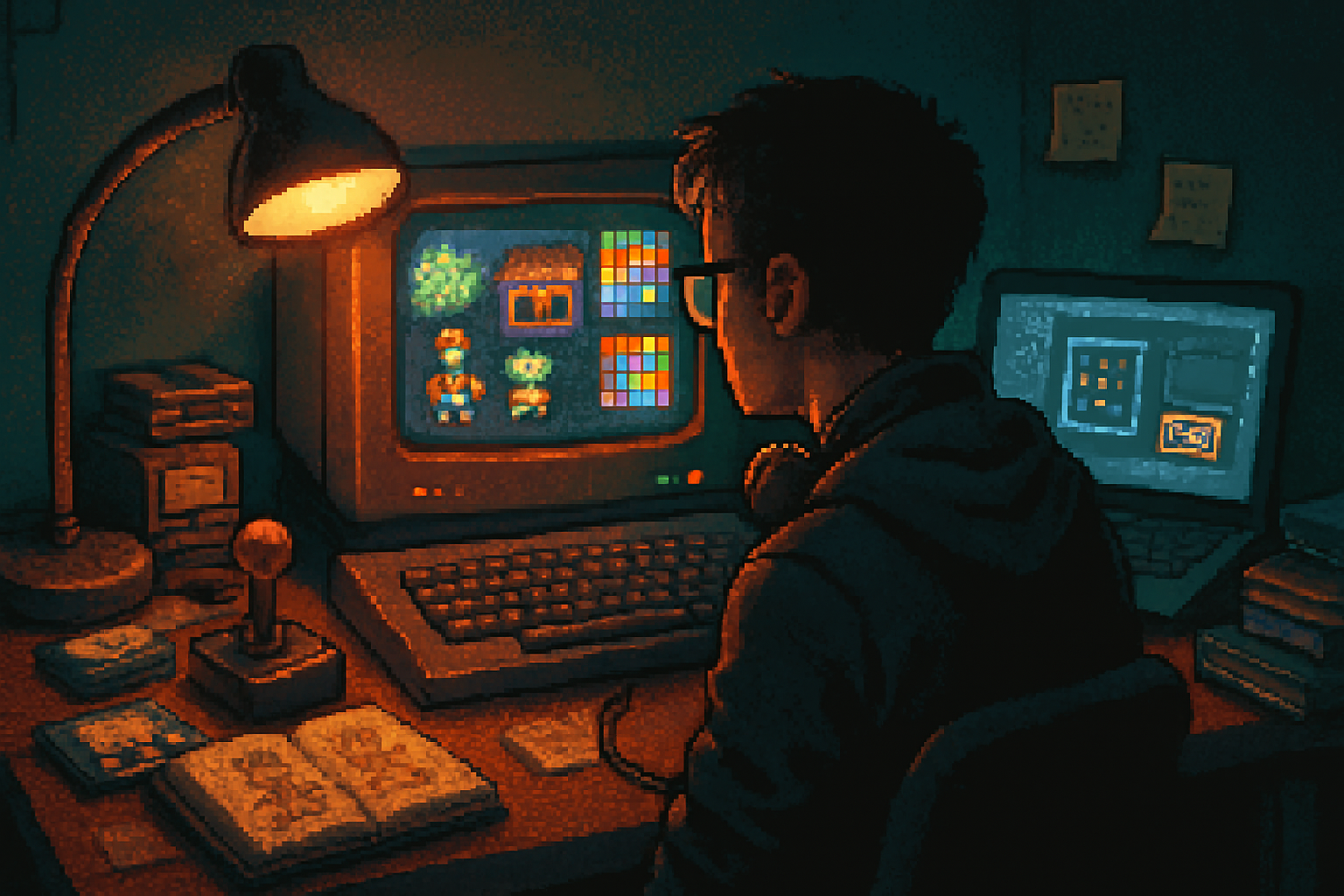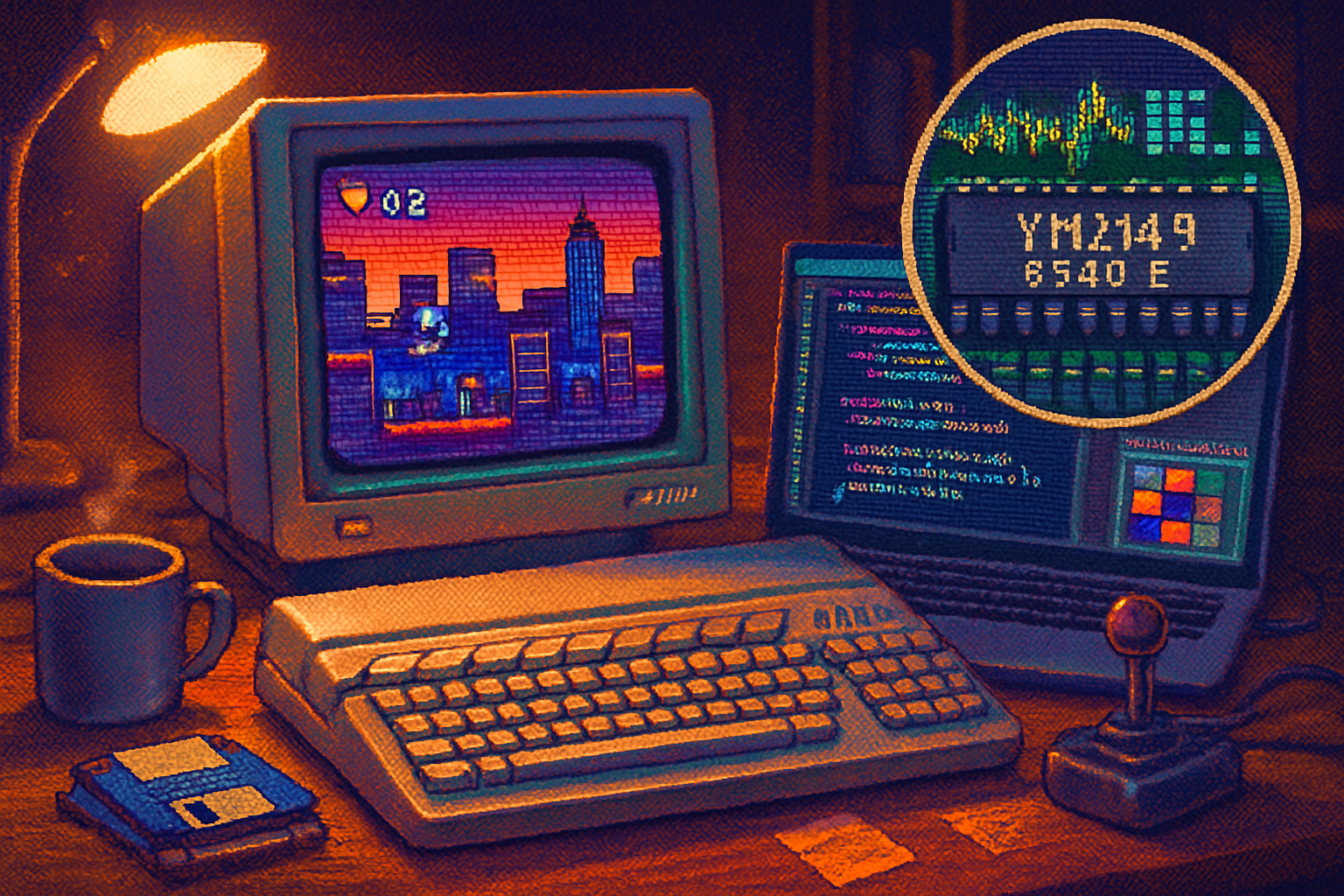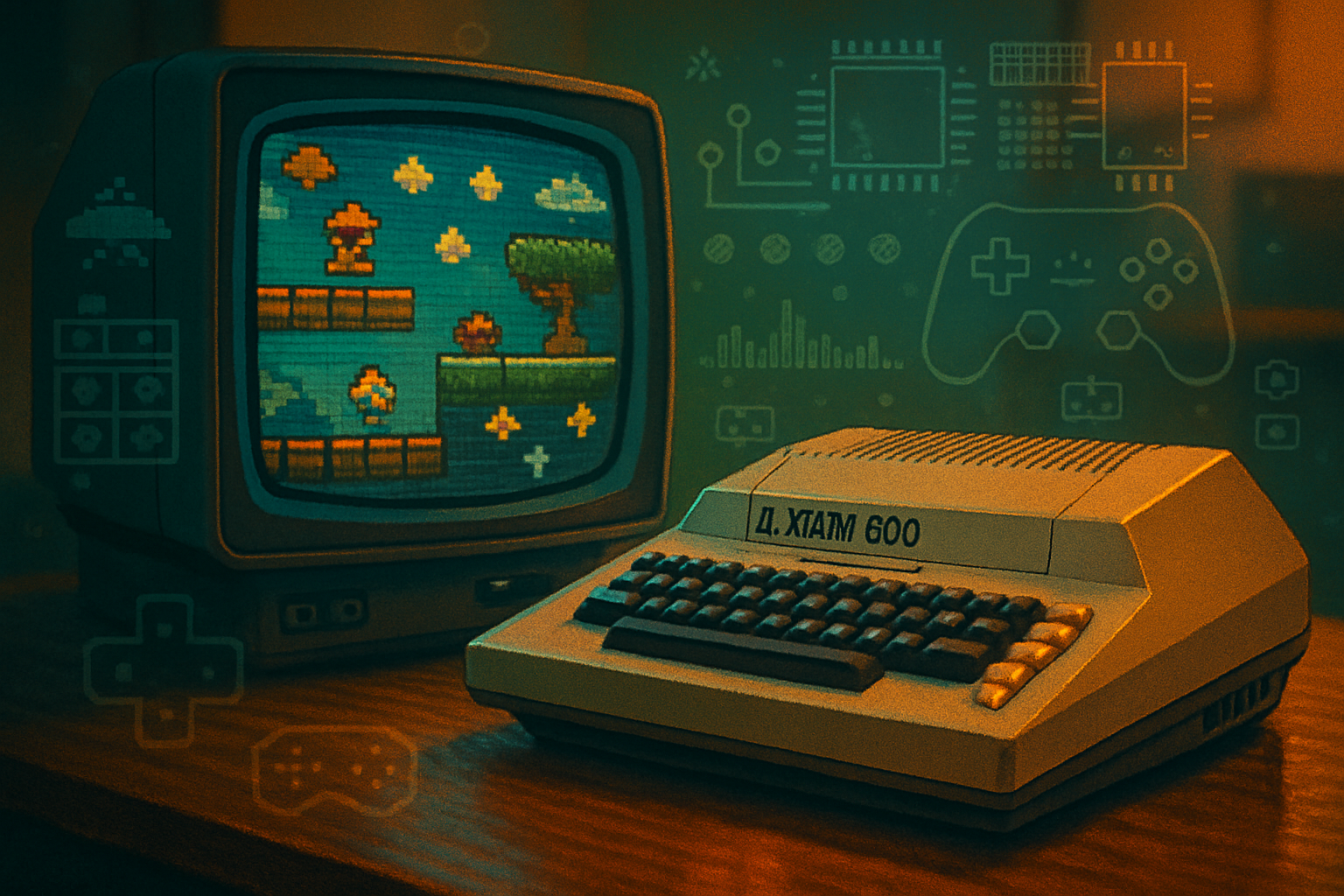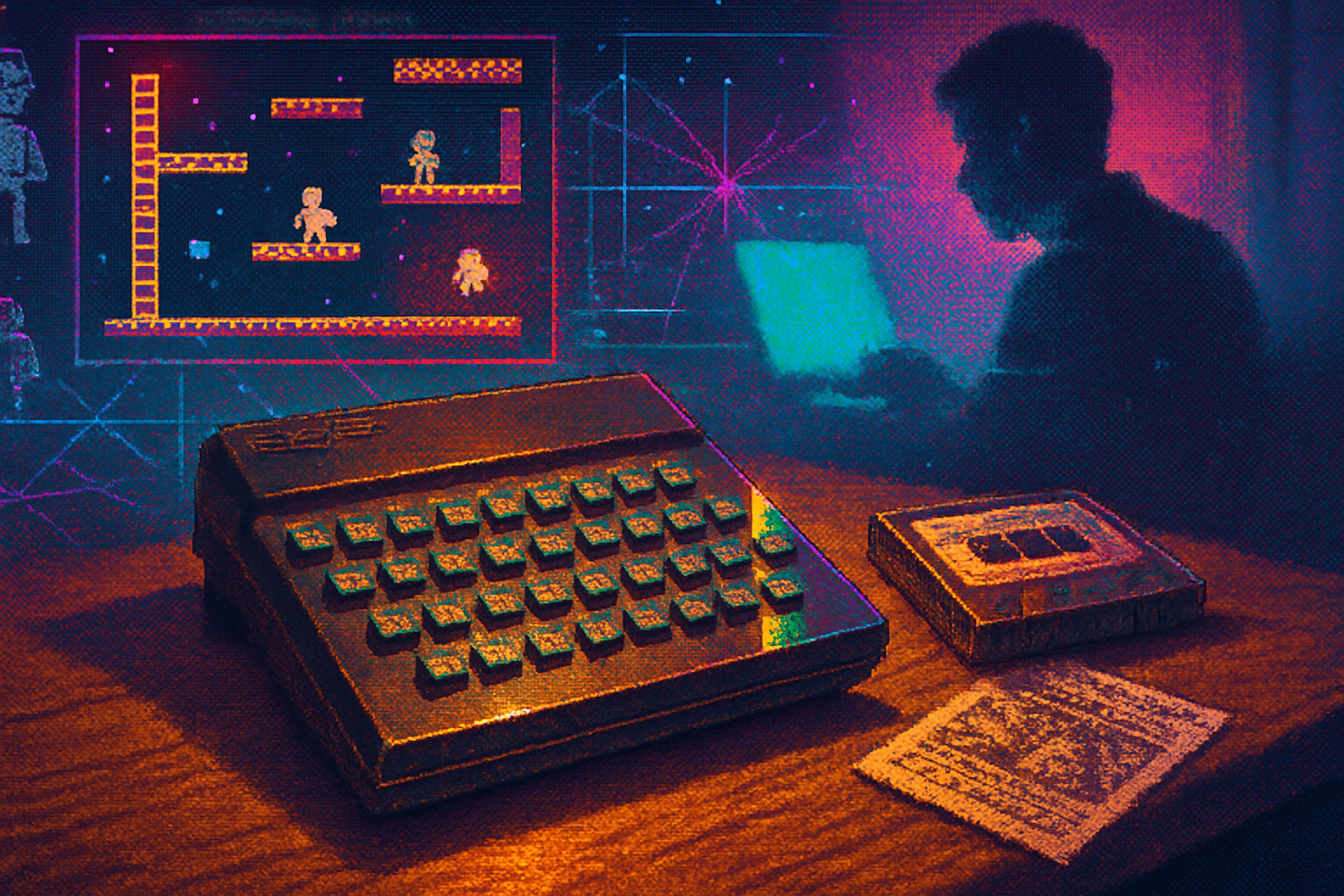· retrotech · 6 min read
The Commodore 64 Resurgence: Why Retro Gaming is Revolutionizing Modern Game Development
How the Commodore 64’s hardware limits, sound and graphics aesthetics, and community culture are feeding modern indie design-spawning new tools, mechanics, and a creative renaissance in game development.
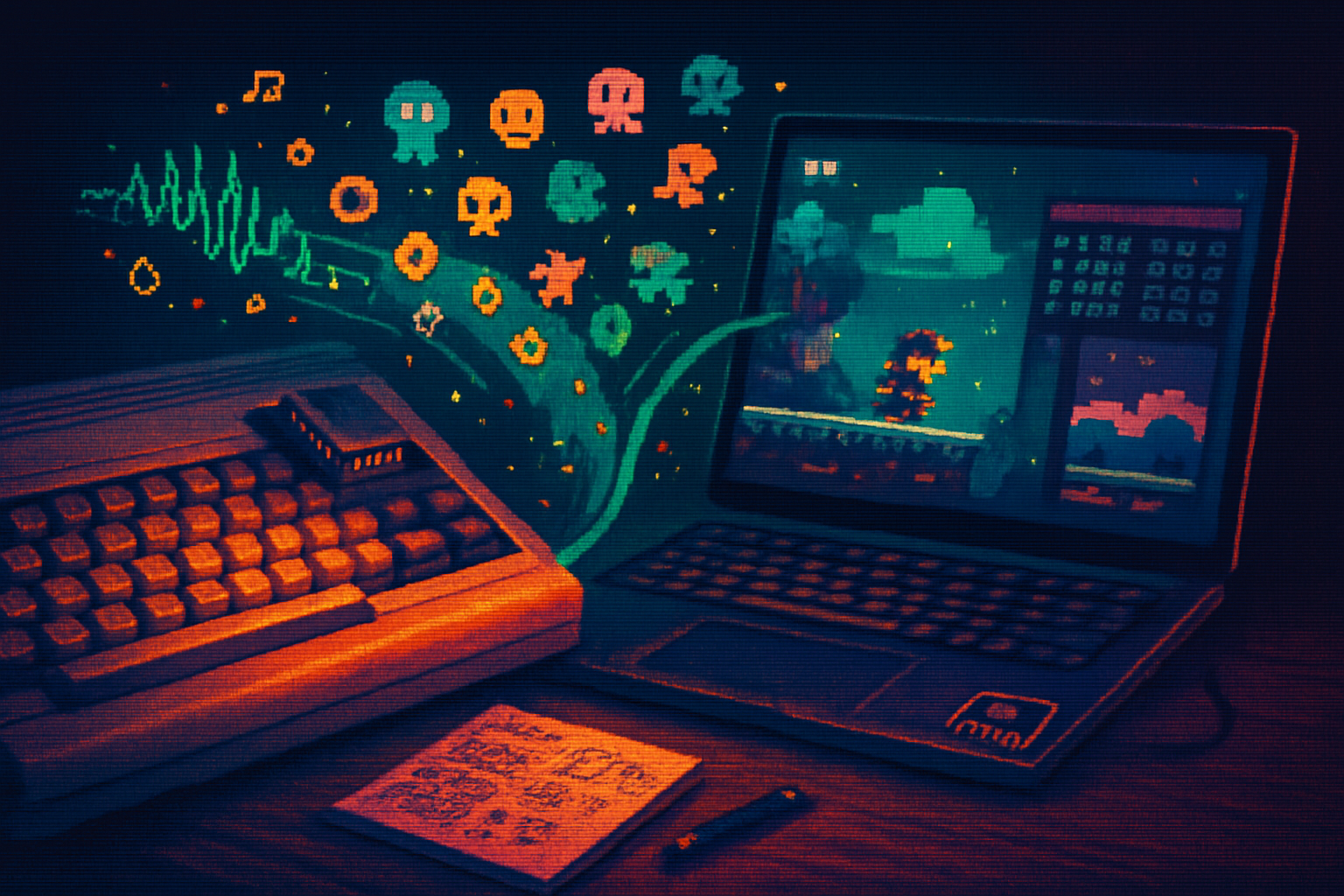
A renaissance in 8-bit
Retro gaming is no longer just nostalgia; it’s an active design language shaping modern games. Among the icons of that era, the Commodore 64 (C64) stands out - not only for sales and cultural impact but for a set of hardware-driven design principles that continue to inspire contemporary indie developers and hobbyists.
This post walks through the C64 traits that keep reappearing in today’s games, why those constraints spark creativity, and how the retro movement is forging new development practices and trends.
Why the Commodore 64 matters today
The C64 was a compact, opinionated platform: 64 KB of RAM, a 1 MHz-ish CPU, a powerful-for-its-time SID sound chip, and a limited-but-flexible graphics system built around sprites and tiles. Those limits produced an ecosystem where programmers, musicians, and artists learned to do a lot with very little (Commodore 64 - Wikipedia).
Two lasting outcomes from that era:
- Design by constraint - every byte mattered, which encouraged prioritization, technical creativity, and novel gameplay solutions.
- Distinctive audiovisual signatures - the SID chip and blocky pixel graphics produced iconic looks and sounds that remain instantly recognizable (
Design principles the C64 taught us
Below are discrete design concepts that carried from C64-era development into modern indie practice.
1) Constraints drive elegant design
When memory, CPU cycles, and storage are finite, designers must prioritize essential systems. That leads to:
- Smaller scope and clearer core mechanics
- Tight control loops and fast feedback
- Clever reuse of systems (one asset serving multiple uses)
Modern indies apply this deliberately: short, polished loops (e.g., bite-sized levels or microgames), minimal control schemes, and systems that yield emergent complexity from simple rules.
2) Tile/sprite systems -> readable, modular worlds
C64 games commonly used tilemaps and hardware sprites. That influenced level design that’s modular, grid-friendly, and easily edited. Today’s pixel-art platformers and metroidvanias still rely on tile-based workflows and modular assets to speed development and maintain clarity.
3) Economy of assets = replay & procedural thinking
With limited cartridge/drive space, replayability and procedural tricks were early solutions. Procedural generation (or parameterized variations) allowed for the illusion of volume without huge asset counts. Many roguelikes and procedural indies trace conceptual roots to that economy.
4) Audio as identity (chiptune & the SID legacy)
The C64’s SID chip gave rise to a distinct palette of timbres and compositional techniques. The chiptune aesthetic is now a deliberate artistic choice - it’s more than retro flavor; it provides immediate emotional and temporal context for players, and it informs how composers think about melodic economy and sound design (Chiptune - Wikipedia).
5) Minimalist UI & instant clarity
Retro games favored minimal HUDs and direct system transparency: health bars, scores, and immediate audiovisual responses to player action. Modern designers borrow this clarity: reduce abstraction, make cause and effect visible, and keep the player focused on the core interaction.
6) Community & demo culture: continuing iteration
The C64 demo scene showed how small communities iterate on craft, trading techniques and pushing hardware to its limits (Demo scene - Wikipedia). That collaborative spirit persists in open-source tools, homebrew releases, and communities sharing music trackers, sprite packs, and optimization tricks.
How those principles are shaping modern trends
Here are clear ways we see C64-era ideas reflected in contemporary development.
Revival of ‘fantasy consoles’ and constraint-first tools
Tools like PICO-8 and TIC-80 intentionally restrict resolution, palette, and memory to force designers into the same creative economy the C64 fostered. These platforms act as modern C64-like sandboxes for quick prototyping and jam-friendly game creation (PICO-8 - Lexaloffle, TIC-80 - official site).
Pixel art and sprite workflows
The aesthetics are popular, but more importantly the workflows matter: tiles, palettes, and sprite sheets reduce artist overhead and accelerate iteration. Indie teams with small budgets use these pipelines to test ideas fast and preserve readability on small screens.
Short-form, repeatable experiences
The demand for short, highly replayable games (microgames, short roguelikes, arcade-bites) maps directly to the design sensibilities forced by early home computers. Developers take the C64 lesson of ‘single compelling loop’ to deliver satisfying sessions in 10–30 minutes.
Emergent mechanics from simple systems
C64-era titles often combined a few simple rules to produce deep play. Modern designers deliberately create small rule-sets that interact in surprising ways - this creates depth without asset bloat and keeps designers nimble during iteration.
Music design: doing more with less
The chiptune revival isn’t purely aesthetic; it’s an approach. Composers working with limited voice counts or constrained synths learn to prioritize melodic and rhythmic hooks and to design sound that supports gameplay rather than competes with it.
The homebrew and demo scenes: a direct bridge
The C64 scene never really died - it evolved. There are active communities producing new C64 games, demos, and tools; emulators like VICE allow development and testing on modern machines (VICE emulator).
That scene matters in two ways:
- It keeps technical knowledge alive - people still learn low-level optimization and hardware-aware thinking.
- It’s a testing ground for ideas - releasing on retro hardware forces constraints that can later be adapted to modern platforms.
Practical lessons for modern developers
If you’re an indie dev looking to borrow the C64 playbook, here are practical takeaways:
- Embrace constraints early - set artificial limits on palette, resolution, or memory to force trade-offs.
- Start with a single, testable core loop and polish it before expanding scope.
- Use tile-based systems and modular assets to speed level creation.
- Design audio to communicate mechanics and player state - not just atmosphere.
- Keep UIs minimal and feedback immediate; clarity increases perceived responsiveness.
- Learn from the demo/homebrew community - read source, study trackers, and try releasing small ROM-sized projects.
Examples and ecosystems to explore
- Commodore 64 hardware & history: Commodore 64 - Wikipedia
- SID chip and its musical legacy: Sound Interface Device - Wikipedia
- Demoscene culture and craft: Demo scene - Wikipedia
- Emulation and development tools: VICE emulator
- Modern constraint-first platforms: PICO-8 - Lexaloffle, TIC-80 - TIC website
- Chiptune background: Chiptune - Wikipedia
Closing: nostalgia or design renaissance?
The Commodore 64’s resurgence is partly aesthetic nostalgia and partly a rediscovery of a design mindset that prizes clarity, cleverness, and iteration. As development teams grow leaner and distribution windows shorter, the lessons of the C64 era - do more with less, design for immediate feedback, and treat constraints as creative tools - are more relevant than ever.
Whether you’re crafting a 64 KB homebrew or a commercial pixel platformer, the C64 legacy offers a practical philosophy: constraints shape great games.
